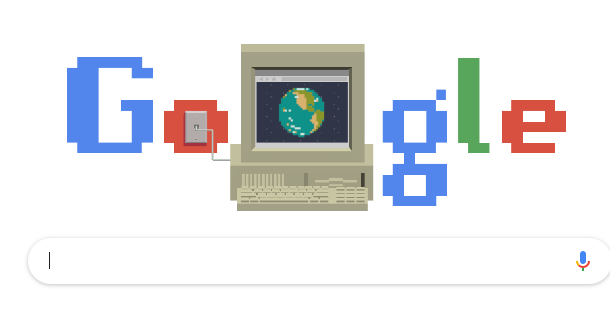NEW DELHI: Tech giant Google is celebrating the 30th birth anniversary of the World Wide Web with a doodle. A British physicist Tim Berners-Lee, working for Europe's physics lab CERN, proposed a decentralised system of information management on March 12, 1989. This led to the birth of World Wide Web which now used by billions of people across the globe.
Initially, Berners-Lee envisioned "a large hypertext database with typed links,"named “Mesh,” to help his colleagues at CERN (a large nuclear physics laboratory in Switzerland) share information amongst multiple computers. Then Lee's boss allowed him time to develop the humble flowchart into a working model, writing the HTML language, the HTTP application, and WorldWideWeb.app— the first Web browser and page editor. By 1991, the external Web servers were up and running.
Today, there are nearly 2 billion websites online. Whether you use it for email, homework, gaming, or checking out videos of cute puppies, chances are you can’t imagine life without the Web.
Jeff Jaffe, CEO of the World Wide Web Consortium, said, "There are very few innovations that have truly changed everything. The Web is the most impactful innovation of our time.”
Not to be confused with the internet, which had been evolving since the 1960s, the World Wide Web is an online application built upon innovations like HTML language, URL “addresses,” and hypertext transfer protocol, or HTTP.
Source: gadgetsnow.com


Comments